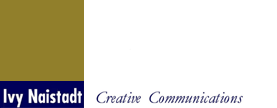Today, most of us are renting and watching movies at home. That’s why recently, I was pleasantly surprised to see a long line of about 60 people outside a small town local movie theater on a chilly Sunday afternoon. And the thought occurred to me that what people are lining up to watch is . . . a story. People will still stand in line to hear a great story!
The reason we tell stories is because storytelling is the currency of human contact. Every day, people gather around their kitchen tables, their offices, on cell phones and share the large and small moments of their lives. If it’s a compelling story or has a particular meaning in our life, we then share the story.
As I coach my clients to up their speaking game and enhance their presentations, one thing becomes very clear. A well-placed story can turn a flat presentation into a memorable one. People suddenly put down their devices, sit up and listen.
There are a few reasons why a well-placed story serves us well in a business setting.
First of all, they increase your memorability factor. Unfortunately, people forget 75 percent of what you tell them within 24 hours of a presentation. But they will remember a well-crafted story example long after they leave.
Secondly, anecdotal pieces woven into your presentations enhance your delivery style. A formal or inhibited presenter will become animated and conversational as they retell a situation that happened to them.
And lastly and perhaps most important of all, you have an opportunity to reach people on an emotional level. By reliving a situation that happened to you; describing what you heard, what you saw and what you did, you reach people on an emotional level. That’s the sweet spot.
You always want to strive for creating a balance between data-driven information (statistics, factual evidence) and anecdotal support (examples, personal stories, analogies) to engage and convince your listeners to act upon what you’ve told them.
Although most of us don’t have academy award winning star -power at our disposal, we can, through our own carefully crafted stories, bring to life the circumstances of our lives and weave a narrative that keeps our audiences engaged and involved in our business presentations. We have our own star power.
The question becomes how you can shape a story into an entertaining yet a meaningful anecdote and incorporate it into a business presentation. If you’re just rambling on about something that happened to you, you’ll defeat the purpose. People will turn off, tune out and go back to checking their devices.
It all starts with a Solid Structure.
I offer several frameworks depending on the situation a presenter is dealing with. What works well for an Investor Pitch, for example, isn’t going to work for a Company Kickoff or Keynote event.
Here’s a tried and true classic structure for you to consider using in a pinch. It’s been around as long as stories have and will serve to keep you on track.
Fairytale Structure
Once Upon a Time
Suddenly
Fortunately
Happily Ever After
Good stories are built around conflicts.
Everything is going along normally and the status quo is unexpectedly interrupted by a conflict. Whether it’s a team effort to meet a deadline which dramatically gets bumped up early, and everyone has to go to great lengths to get ‘er done, or you’re conducting an offsite training program when suddenly the hotel fire alarm sounds and everyone has to clear out, there is a clear conflict that keeps your listeners wanting to know how you overcame the obstacle.
Once you share with your listeners the heroic, dramatic or perhaps humorous steps you took to overcome the conflict, you always want to let to them know how it turned out. Following this simple four-part structure will take out the guesswork and bring your story to life.
One last critical tip. The story has to be relevant and support a point you're making.
Make a point
Support it with a story
Repeat the point
I like it because it’s easy to remember, to construct and easy for your listeners to follow.
Try it and let me know how it turns out!

